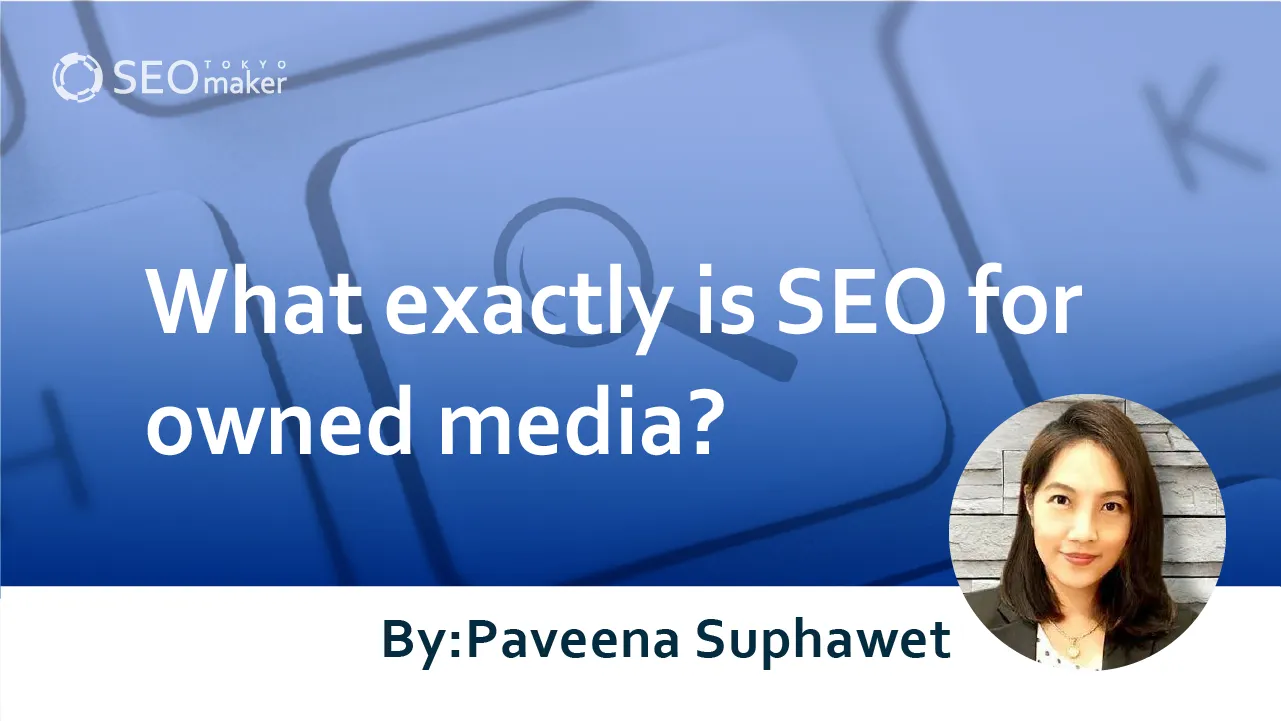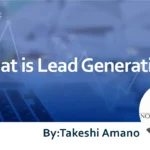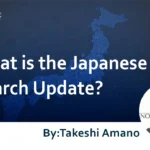What exactly is SEO for owned media? An Introduction to Basic and Internal SEO Measures
contents
 Recently, more companies are managing their owned media. However, it’s challenging to see immediate results at the inception of owned media—it’s not enough to merely post the content you want to share.
Recently, more companies are managing their owned media. However, it’s challenging to see immediate results at the inception of owned media—it’s not enough to merely post the content you want to share.
Even if you create content with high-search-volume keywords, it won’t stick with users if it’s not user-centric or if it solely focuses on the message you want to communicate.
In this article, I will explain the SEO measures for owned media and provide examples of what not to do. If you’re interested in SEO strategies for owned media, please take a look.
What is Owned Media?
Owned media refers to any media owned by a company. Generally, this includes a company’s websites, but can also encompass printed materials like pamphlets and public relations magazines.
As mentioned earlier, it’s tough to achieve results in the early stages of launching owned media. A shortcut to success in owned media is to operate with SEO in mind.
SEO stands for Search Engine Optimization.
SEO measures are strategies to make websites appear higher in search engine results, predominantly determined by Google’s algorithms.
However, Google’s algorithm has over 200 variables and is frequently updated, requiring continuous content optimization and revision.
Continuous SEO efforts, staying updated with Google’s algorithm changes, and strategic planning are crucial for success.
Reasons why SEO for owned media is gaining attention
Here, we explain why SEO for owned media is gaining attention.
Because it leads to increased awareness of the company’s products and services
The reason why SEO for owned media is gaining attention is that it leads to increased awareness of a company’s products and services.
For example, if SEO is implemented on owned media and it ranks higher in search results, the website can expect more organic traffic from search engines.
In other words, there will be more opportunities for users who use search engines to see it, thereby increasing awareness of the company’s products and services. As awareness grows, more users will become interested in the company’s products and services, leading to more purchases and sign-ups.
Thus, because it leads to increased awareness of a company’s products and services, SEO for owned media is gaining attention.
Because it can reduce advertising costs
The reason why SEO for owned media is gaining attention is that it can reduce advertising costs.
For example, if you run listing ads on Google to increase the number of visits to your owned media from search engines, advertising costs will obviously incur. However, if SEO measures are implemented and the site starts to rank higher, you can expect organic traffic from search engines, eliminating the need for advertising costs.
Thus, because it can reduce advertising costs, SEO for owned media is gaining attention.
Because it becomes a company asset
Another reason why SEO for owned media is gaining attention is that it becomes a company asset.
For example, if SEO measures are implemented on owned media and it ranks higher, it will become a website that can attract organic traffic from search engines. If you continue to manage this website, you can maintain owned media with strong attracting power, making it a company asset.
Thus, because it becomes a company asset, SEO for owned media is gaining attention.
Basic SEO Measures for Owned Media
So far, we have explained why SEO for owned media is gaining attention. Now, let’s discuss the basic SEO measures for owned media.
Creating High-Quality Content from the User’s Perspective
In SEO measures, keyword selection and search volume are often emphasized, but the primary focus should be on creating high-quality content from the user’s perspective.
There are various SEO strategies, but the fundamental activity of managing owned media is to research user needs and create high-quality content. In other words, you need to create content that meets user needs when they access your media.
Additionally, high page views are meaningless if they do not achieve the goals set for the owned media. First, consider how to satisfy user needs.
Continuously Rewrite Content to Aim for Higher Rankings
A common mistake made by companies that have just launched owned media is to neglect articles after they are published.
It is rare for newly published articles on a freshly launched media site to rank highly. Therefore, after publishing an article, regularly check its search ranking and rewrite it as needed.
Monitoring Search Rankings
As mentioned earlier, search rankings are crucial for owned media. However, these rankings can change dramatically with algorithm updates.
Keep an eye on search rankings, and if they don’t improve, consider why.
Choosing Keywords Aligned with the Goals of Owned Media
Select keywords based on the objectives of your owned media.
Keyword Search Volumes
-BtoB Owned Media (Search Volume: 320)
-Owned Media SEO (Search Volume: 210)
For example, you might be tempted to create content for ‘BtoB Owned Media’ due to its higher search volume compared to ‘Owned Media SEO.’
However, these two keywords attract users with entirely different search intentions.
To explain, users searching for ‘BtoB Owned Media’ are typically businesses engaged in or interested in BtoB markets. In contrast, ‘Owned Media SEO’ is searched by users wanting to learn about SEO for their owned media.
The keywords you choose will determine the audience your article resonates with. Select keywords while considering the operational goals of your owned media.
Internal SEO Measures for Owned Media
Next, I will discuss internal measures for owned media SEO.
Designing Websites with Users and Crawlers in Mind
When implementing internal SEO measures for owned media, it’s essential to design a website structure that considers both users and crawlers. Google prefers high-quality, user-focused content to rank well.
Using keywords in titles and headings and correctly utilizing H tags can lead to better evaluations.
Given the continuous updates to Google’s algorithms, creating high-quality, user-focused content has become more challenging for achieving top rankings. Therefore, focus on a website structure that caters to both users and crawlers.
Considering Visibility on Mobile Devices
Website browsing is not limited to PCs; many users access sites via smartphones and tablets, making mobile visibility crucial.
Currently, Google places significant importance on the usability of mobile sites, and pages optimized only for PCs may not rank as well.
Websites not optimized for mobile devices tend to rank lower in mobile searches. Therefore, implement internal SEO measures tailored for mobile devices to achieve better rankings. This article covers website design that enhances visibility on mobile devices, so please have a look.
Improving Website Load Speed
Slow website load speeds can lead to user abandonment.
In July 2018, Google introduced the Speed Update, which impacts the rankings of exceptionally slow-loading websites. Consequently, load speed has become a critical factor for ranking well.
To improve website load speed, consider the following measures.
-Compressing images
-Removing unnecessary CSS
To measure your website’s speed, you can use Google’s Pagespeed Insights by entering your URL.
Common Pitfalls in Owned Media Management
Up to this point, I’ve explained SEO measures for owned media. Now, let’s discuss common mistakes made in managing owned media.
Increasing Page Views Without Increasing Conversions
Implementing SEO and boosting traffic from search engines doesn’t always lead to more conversions.
One possible reason is the choice of keywords. While articles built around high-search-volume keywords can rank well and attract traffic, they don’t necessarily convert.
For instance, a company offering diet training services looking to increase conversions might consider these keywords.
- Diet methods
- Diet training costs
‘Diet methods’ has a high search volume, which can drive traffic if targeted. However, it may not lead directly to conversions since it’s a broader keyword that may not directly relate to the company’s services. On the other hand, users searching for ‘Diet training costs’ are more likely to be interested in the specifics of paying for diet training, making it a keyword closer to actual conversions.
It’s recommended to be mindful of the intended target when selecting keywords.
Keyword Cannibalization
Keyword cannibalization occurs when multiple pages from the same website compete for the same search keywords.
Cannibalization can split metrics like backlinks, conversions, and click-through rates between pages, making it harder for either page to rank well.
To avoid this, ensure your keyword strategy doesn’t lead to cannibalization.
Tools for keyword difficulty/grouping can help identify potential issues in advance.
Strategic Design for Owned Media
Before launching owned media operations, it’s crucial to design an overall strategy. Setting clear goals for what you want to achieve with your owned media can help define its direction.
Setting goals allows you to determine the target audience, site concept, and keywords to pursue. Begin with a comprehensive strategic design for your owned media to clarify its direction, followed by site and content design.
SEO involves site and content design, so starting with a strategic design for your owned media is essential.
Emerging SEO Trends for Owned Media
Here are four applicable trends from the famous SEO research firm BACKLINKO’s 2021 SEO trends that are gaining attention and are worth implementing early in your owned media.
Improving Owned Media UX
Google’s 2020 announcement on Core Web Vitals has spotlighted user experience (UX) metrics on web pages. These initiatives focus on improving web user experiences, with three key metrics defined as Core Web Vitals.
In May 2021, three metrics were released: Largest Contentful Paint (LCP), which measures page loading speed; First Input Delay (FID), which measures the interactivity and responsiveness of the site; and Cumulative Layout Shift (CLS), which indicates the visual stability of the layout.
As devices evolve, websites must prioritize usability, suggesting a review of owned media UI to align with these metrics.
Utilizing Experts for Article Creation
Google’s guidelines emphasize the importance of Expertise, Authority, and Trustworthiness (E-A-T), which is predicted to become even more crucial. The same quality content may rank better if created by someone knowledgeable in the field, highlighting the importance of demonstrating credible and trustworthy information.
Therefore, when creating content within owned media, it’s essential to either show that knowledgeable individuals have written it or to have articles reviewed by experts.
Video SEO
With more users consuming video content, video has become increasingly prominent in search results, enhancing the importance of video SEO.
Incorporating videos within owned media content, optimizing video titles, and descriptions with targeted keywords, and informing Google about the video content are crucial steps.
Moreover, video content can visually engage users and increase the time they spend on the site, potentially aiding SEO efforts if the videos are highly relevant to the content.
Optimizing Titles and Meta Information
Research by BACKLINKO(*2) indicates a 41.4% decrease in click-through rates for organic searches on smartphones since 2015. This decline is partly due to Google’s evolution in displaying snippets and FAQs in search results to quickly resolve user queries.
To attract traffic from these advanced search results to owned media, titles and meta information must be optimized to appeal to users. As the first point of contact in search results, titles and meta information significantly impact usability and click-through rates, necessitating correct settings from a UX perspective.
Frequently Asked Questions About SEO for Owned Media
Q: What tool do you recommend for keyword selection?
A) I recommend Google’s Keyword Planner. It has a function to extract search volumes for keywords. However, when used for free, it only provides approximate search volumes. Precise data can be obtained by running ads on Google Ads.
Additionally, please refer to “Keyword Selection: Tips for Choosing Good Keywords for Beginners.” This guide also introduces keyword selection tools, so be sure to check it out.
Q: What are the operational objectives of owned media?
A) The main objectives are as follows.
- Generating leads
- Increasing awareness of the company, products, or services
- Branding the company or services provided
- Strengthening recruitment capabilities
- Monetization
Q: What types of content are typically published on owned media?
A) Here are the types of content.
- Article content
- Image content
- Video content
- Reviews and testimonials
- Diagnostic content
- Email newsletters
The optimal content type varies depending on the operational goals of the owned media, so it’s important to create content that aligns with these objectives.
Summary
In this article, I have discussed SEO measures for owned media. SEO involves strategies to make websites more likely to appear at the top of search engine results, like those from Google. Owned media can be challenging to succeed with initially as it’s hard to get results right away. Therefore, appropriate SEO measures are essential to avoid becoming invisible to users. I hope this article helps in the success of your company’s owned media efforts.
Back to the top of Tokyo SEO Maker SEO Consultant Admano Co., Ltd., Representative Director Takeshi Amano Graduate of Nihon University’s Law Faculty, Amano has worked in advertising for 12 years, where he encountered and began studying SEO from its early days. He taught himself SEO, conducting experiments and verifications on over 100 sites. He later founded his company, now in its 11th year, handling everything from sales and SEO consulting to web analysis (Google Analytics Individual Qualification, GAIQ) and website production. His company has worked on SEO measures for over 2000 websites to date.”










![What is a Description? Explaining the Meaning, Writing Style, and Changing Word Count – [2023 Edition]](https://www.switchitmaker2.com/en/wp-content/uploads/2024/09/what-is-description.webp)










